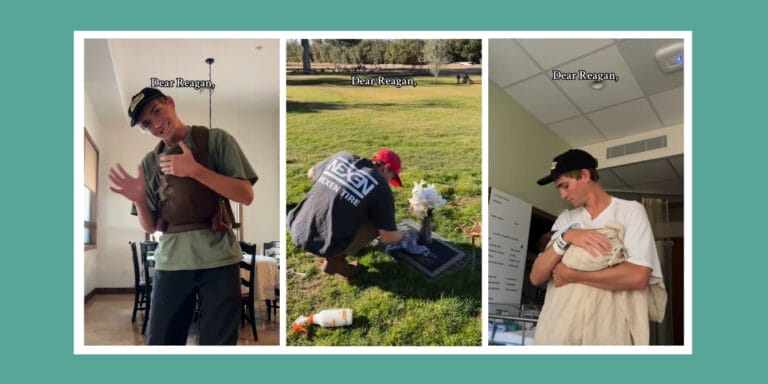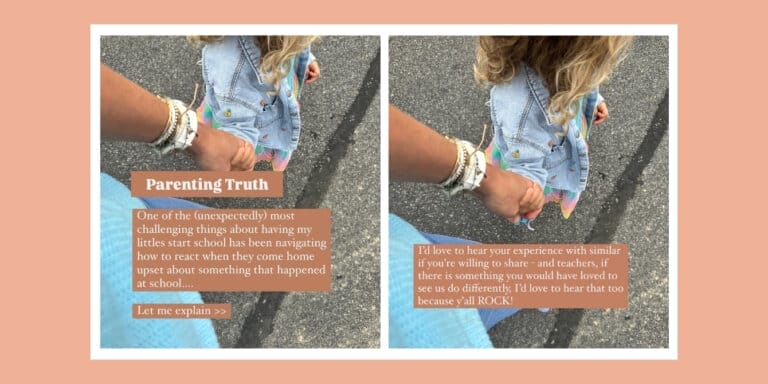How to talk to kids who are scared about their COVID-positive friends

Communication and reassurance can help children ride out the pandemic.
Table of Contents
- The same day, my son learned a second close friend had also tested positive. I know our children are suffering through this pandemic, but it didn't occur to me that they may have this fear of possibly losing a friend—or even their own lives—to the virus.
- How can we help our children cope if they or their friends get COVID-19?
- How can we help our children cope mentally during this pandemic?
“Mom, could they die?” The question from my very inquisitive 13-year-old son stopped me in my tracks. We had just received word from his school that he would be required to quarantine at home for 10-14 days. His quarantine was the result of a positive COVID-19 test for a classmate, who happened to be my son’s friend and teammate.
The same day, my son learned a second close friend had also tested positive. I know our children are suffering through this pandemic, but it didn’t occur to me that they may have this fear of possibly losing a friend—or even their own lives—to the virus.
The question was shocking, and it broke my heart to hear the worry in his voice. I shared with him what I’d seen on the news about how most of the younger generation who had contracted the virus were experiencing milder health problems. I added that unfortunately, some children had passed away after contracting COVID-19, but I believed most of them had underlying health conditions. I tried to comfort him as best as I could, but our conversation made me think of how other children were feeling and dealing with this issue.
Reports indicate that positive COVID-19 test results for children are consistently lower than older age groups. When it comes to children ages 0-19 who test positive for COVID-19, statistics show they are faring better than others. According to the Centers for Disease Control, the number of new daily COVID-19 cases for all age groups has been on the steady decline since a peak on January 8, 2021 with over 314,000 new cases reported that day. A March joint state COVID-19 data report from the American Academy of Pediatrics and the Children’s Hospital Association shows that nearly 3.3 million children ages 0-19 have tested positive for the virus since the country went into lockdown last spring. Children represent just over 13% of all COVID-19 cases in the United States, and severe illness related to the virus is rare in that age group. The joint report notes that hospitalization and deaths related to the COVID-19 virus in children and teens are uncommon. State statistics from the Children and COVID-19: State Data Report show about 0.00%-0.03% of cumulative COVID-19-related deaths happened in children and teens.
How can we help our children cope if they or their friends get COVID-19?
According to Lisa Farhat, M.Ed., LPC, with Farhat Family Counseling, PLLC, one of the most difficult things for children during the pandemic is feeling helpless and powerless. If your child or your child’s friend gets sick with the virus, it may cause them to feel this way. It’s important for parents to highlight ways their children and teens have control over themselves. According to Farhat, simple sentences can make sure the door to communication stays open. Some examples to help identify our children’s feelings include saying:
- “You feel really scared.”
- “You feel overwhelmed and out of control of this situation.”
- “You feel so mixed up, worried, sad, mad, all at the same time.”
Farhat said sentences like these help normalize the child’s feelings without minimizing them. “We need to label their feelings, give them words. Be prepared to label some complex ones, too, like resentful, overwhelmed, overstimulated, powerless and numb,” shared Farhat. “Fears and anxieties can flourish in the dark. With our verbal acknowledgment/validation/proof of acceptance and understanding, we can shine a light on their fears and hopefully keep them from taking over.”
How can we help our children cope mentally during this pandemic?
Actress Kristen Bell is one of many moms prioritizing their children’s mental health during COVID-19. One way to support children and help them cope during the pandemic is to be calm and confident. Being prepared is also important. Parents can help children feel prepared by discovering good coping strategies and working with their children to make sure they know when and how to use those strategies.
Some good examples of coping strategies include journaling, meditation, music and art. Exercising, interacting with animals, spending time outdoors and cooking could also help. “Once they are able to label what feelings they’re having, as well as a list of coping strategies that are available to them, it will be easier for them to pick and choose what they need/want on any given day,” Farhat explained. Parents can also model and encourage these activities and get creative as a family to help cope during the pandemic.
Changes in behavior could warn of possible stress in children and teens. According to the CDC, common behaviors from stress related to the pandemic could include excessive irritation in younger children, “acting out” behavior in teens and poor performance in school. Communication is key. “In order for them to connect those dots, they need to be self-aware and prepared. When we are regularly labeling the feelings that we see them expressing, we contribute to their self-awareness,” Farhat shared.
It has been a year. The pandemic forced a shutdown across the globe last March, and it’s been a challenge for everyone, especially the younger generation. They miss their friends, they may be missing out on sports and many may have had a difficult time adjusting to virtual learning. Our youngsters are living in a historical time. The American Academy of Pediatrics and Children’s Hospital Association joint report indicates more data is needed on the pandemic’s long-term effects on children including their physical, emotional and mental well-being.
Parents can continue to reassure their children that they are safe during the pandemic and in the future. Let’s spend time with our children and talk to them about the stresses they may be feeling. It could do us all a little good.


































